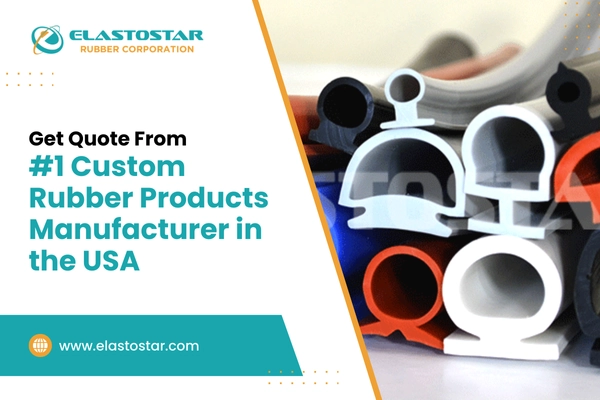An O-ring is a mechanical gasket that is used for industrial purposes. It is in the shape of a torus. According to geometry, a torus is a surface of revolution generated by revolving a circle in three-dimensional space about an axis coplanar with the circle. Chemically, these rubber silicone O-rings consist of methyl and vinyl groups attached to the main silicone chain.
One of the greatest traits of rubber silicon O-rings is their ability to handle extreme and harsh temperatures and thermal cycling. Thermal cycling is a process that involves exposing and passing through a substance through two extreme temperatures.
It is an environmental stress test used to evaluate product reliability. This process also helps to capture or recognize manufacturing defects. Thus, thermal cycling helps diagnose any defect in the considered product early.
O-rings are generally used in static and dynamic applications. These silicone rings are used in places with relative motion between the parts and the O-ring. Due to its heat-withstanding capacity, it is used where friction occurs or at least tends to occur. Some dynamic applications where this rubber silicone ring is used are rotating pump shafts and hydraulic cylinder pistons. Gas and fluid sealing are static applications where this ring is used.
Due to several advantages, rubber silicone O-rings are generally used as seals and are the most preferred seals. Some commonly known advantages are inexpensive, easy to manufacture, very reliable, and very simple mounting techniques. Thus, they are not very complex to use. The procedures are quite simple to understand and perform.
Table of Contents
How Are Rubber Silicone O-Rings Made?
Rubber silicone O-rings are crafted from a high-quality silicone compound known for its flexibility, durability, and resistance to extreme temperatures. The manufacturing process begins with selecting raw silicone material, which is then mixed with curing agents and other additives to achieve the desired properties.
This mixture is molded into the familiar O-ring seal shape through compression or injection molding. Once formed, these O-ring rubber components undergo curing, exposing them to heat to solidify the shape and enhance their durability. The final product, a silicone O-ring, is inspected for quality and precision to ensure it meets industry standards.
Varieties Of O-Rings
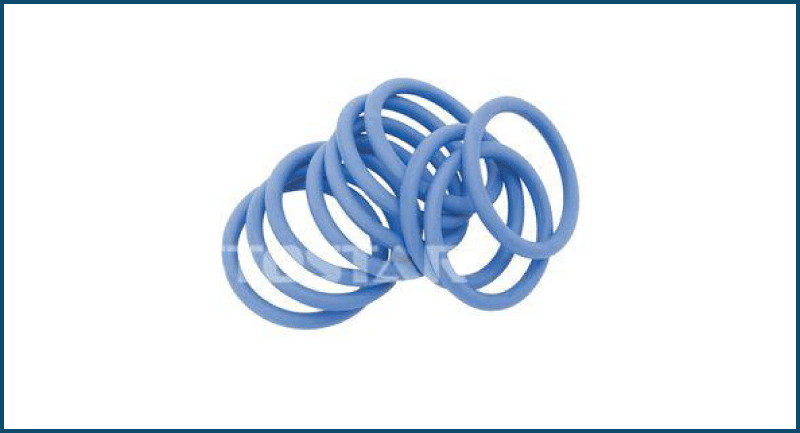
Rubber silicone O-rings are available in varieties. They have a variety of and are available in different shapes and sizes. The sizes of the rings are signified, as well as the inside and outside diameters. Different applications need different rings that will provide the utmost satisfaction to the specific requirement. Thus, the ring that suits the application best or provides the utmost advantage to the considered application should be chosen.
Advantage Of Rubber Silicone O Ring
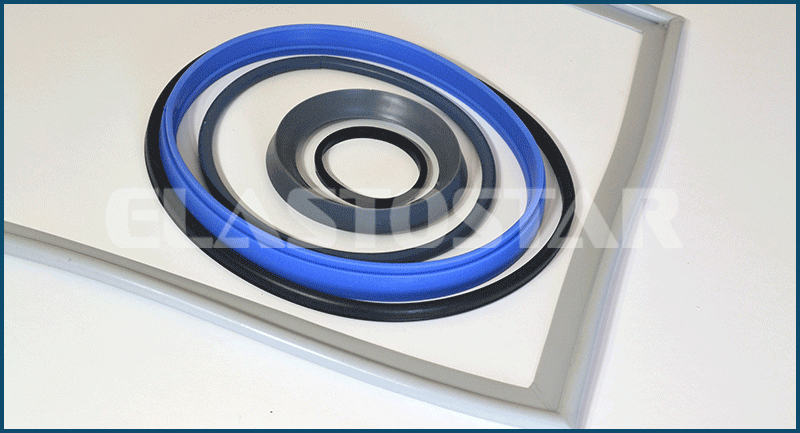
There are several advantages and traits of rubber silicone O-rings. Some are given down below-
- These silicone rings are remarkably versatile.
- The rubber in these rings enables it to be immensely flexible.
- One of the many traits of these rubber silicone rings is their ability to withstand extreme heat. Its quality of heat resistance is applaudable.
- These silicone rings also have a shore of hardness.
- It can easily work and function effectively in cold temperatures up to -50 degrees
- These rings can be used in places where damage is a factor.
- These rings also resist ozone, ultraviolet rays, and many other oils.
- Rubber silicone rings also offer low compression set characteristics.
- These rubber silicone rings can also be modified to have flame retardant.
- These rings can also be modified to be electrically resistant or changed and transformed into a conductor.
- These rubber rings are extremely cost-efficient.
Types Of Rubber Silicone O-Rings
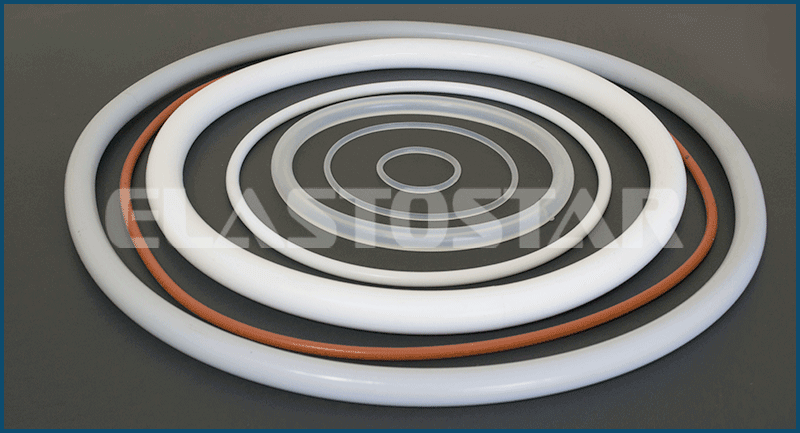
There are a vast range of rings to choose from. However, the following important ones are discussed below-
- FDA Silicone O-rings
- Vulcanized Silicone O-rings
- Rubber Silicone O-rings
- Custom Silicone Rubber O-rings
- Mate Datatable Silicone O-rings
These types of rings shall be discussed further:
1.) FDA Silicone O-Rings:
As commonly misunderstood, the FDA does not certify or approve O-rings. O-rings are even used in the food industry. Both food and pharmaceutical companies use them. The FDA publishes and specifies guidelines that list the ingredients that are safe to be used in applications where the rubber rings will come in contact with food or food materials.
After getting the specified materials, the manufacturer’s duty is to follow the given instructions and abide by them.
2.) Vulcanized Silicone O-Rings:
Vulcanized O-rings are made from extruded cord stock cut and bonded together, the opposite process of moulded O-rings. These silicone O-rings are generally used in static applications where molded O-rings cannot be used due to non-standard dimensions, where only small pieces are required.
Vulcanized silicone O-rings can be made from a wide range of elastomers and almost any size.
3.) Rubber Silicone O-Rings:
Rubber silicone O-rings are elastomer products that have a vast range of uses. This means that this type of O-rings is widely used in multiple types of applications. Another major advantage of these types of rings is their property of being cost-efficient.
These types of rings are very inexpensive and thus affordable. They provide very easy and fast sealing methods. Using them is not complicated. They are very easy to mount and do not involve any complicated technique. These rings can seal properly and avoid leakage from anywhere at all.
4.) Custom Silicone Rubber O-Rings:
The demand for custom silicone rubber O-rings has grown steeply and constantly. The main reason for this increasing demand is that this ring can be modified and changed to suit the exact requirement without compromising or adjusting.
This type of rubber ring is manufactured using various elements and plastic compounds. It can be specifically customized to satisfy the desired requirements, making it easier to use.
5.) Hollow O-Rings
This is an alternative to standard O-rings, so it may or can be used in place of the standard rings. These hollow O-rings can only be used where low closing force is required. They are suitable for applications with rough, uneven surfaces and low-pressure static applications. However, these rings are not suitable in places where high pressure is involved and in dynamic applications.
Thus, silicone rings are cheap yet very efficient. They satisfy their function very decently. They are very easy to use and, therefore, do not make mounting them very difficult. This makes these rubber silicone O-rings very easy to use. Their ability to withstand extreme temperatures and be very cost-efficient is what makes them preferable.
Rubber silicone rings’ accessibility is another advantage that draws much positive attention. They are readily available in cities. Thus, their easiness should be considered and deemed important. Getting one’s hands on them is no complex method. Therefore, these rings satisfy many requirements without having any complications.
| Type of O-Ring | Key Characteristics | Common Applications |
| Silicone O-Rings | Excellent flexibility, high-temperature resistance | High-temperature, medical, and food-grade applications |
| Nitrile (Buna-N) O-Rings | Good resistance to oils and fuels | Automotive, industrial, and oil-related applications |
| Viton (Fluorocarbon) O-Rings | Excellent chemical resistance, high-temperature performance | Chemical processing, aerospace, automotive |
| EPDM O-Rings | Good weather, water, and steam resistance | Automotive, HVAC, outdoor applications |
| Neoprene O-Rings | Good resistance to oils and moderate chemicals | Refrigeration, air conditioning, automotive |
| Polyurethane O-Rings | High abrasion and wear resistance | Hydraulic systems, heavy machinery |
| PTFE (Teflon) O-Rings | Excellent chemical resistance, non-stick properties | High-temperature, corrosive environments |
| FDA Approved O-Rings | Made from materials that meet FDA guidelines for food and pharmaceutical contact | Food and pharmaceutical industries |
| Vulcanized O-Rings | Made by bonding extruded cord stock, suitable for non-standard dimensions | Static applications, non-standard sizes |
| Custom Silicone Rubber O-Rings | Highly customizable, cost-efficient, and suitable for a wide range of applications | Various industrial, automotive, and custom applications |
| Hollow O-Rings | Alternative to standard O-rings, suitable for low-pressure and uneven surfaces | Custom Silicone Rubber O-rings |

Why Choose Silicone O-Rings Over Other Materials?
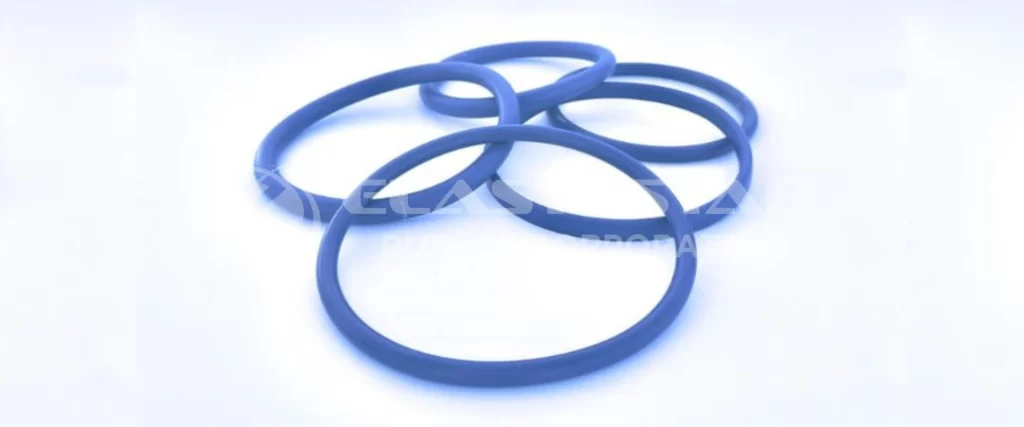
Silicone O-rings offer several advantages that make them a preferred choice over other O’rings materials
- Cost-Effectiveness
Although the initial cost of silicone ring rubber may be higher than some alternatives, their durability and long lifespan make them a cost-effective solution in the long run. They require fewer replacements, which reduces overall maintenance costs. - Ease of Installation and Maintenance
Silicone O-rings are known for their flexibility, which makes them easier to install compared to other O’rings materials. Their ability to maintain a reliable seal with minimal wear also simplifies maintenance, as they are less likely to fail under stress. - Environmental Benefits
Silicone on rubber O-rings are more environmentally friendly due to their recyclability. Unlike some synthetic materials that are difficult to recycle, silicone can be repurposed, reducing waste and contributing to sustainable practices. Elastostar offers a wide range of high-quality silicone O-rings, ensuring you have the right solution for your specific needs.
The table below highlights how silicone O-rings compare with Nitrile and EPDM O-rings in terms of properties:
| Property | Silicone O-Rings | Nitrile O-Rings | EPDM O-Rings |
| Temperature Range | -60°C to 230°C (-76°F to 446°F) | -40°C to 120°C (-40°F to 248°F) | -50°C to 150°C (-58°F to 302°F) |
| Chemical Resistance | Excellent | Good, particularly with oils | Good, particularly with water and steam |
| Flexibility | High | Moderate | Moderate |
| Durability | Long-lasting | Good | Good |
By choosing silicone O-rings, especially from trusted suppliers like Elastostar, you ensure superior performance in extreme temperatures, chemical resistance, and overall durability for a variety of applications.
What Are Common Issues with Silicone O-Rings and How to Avoid Them?
Silicone O-rings are reliable and durable, but like any component, they can face issues if not properly handled. Here are some common problems and how to prevent them:
- Wear and Tear
Over time, even the best silicone rubber seal can experience wear and tear due to constant use and exposure to harsh conditions. To prolong the life of your O’ring in silicone, it’s crucial to regularly inspect and replace them before they become too worn. Proper lubrication and avoiding exposure to extreme conditions beyond the O-ring’s specifications can also help in reducing wear. - Installation Errors
Improper installation is a common cause of O-ring failure. Ensuring a proper fit during the O ring manufacturing process is vital. When installing, avoid twisting or stretching the rubber gasket ring excessively. It’s important to follow the manufacturer’s guidelines for installation to ensure a secure and effective seal.
How to Maintain and Care for Silicone O-Rings?
- Cleaning
Regularly clean silicone O-rings with mild soap and water to remove dirt and contaminants, avoiding harsh chemicals that could damage the silicone rubber seal. - Storage
Store O-rings in a cool, dry place, away from sunlight and ozone sources. Keep them flat and not under tension to maintain their elasticity. - Inspection
Inspect O-rings regularly for signs of wear, such as cracks or stiffness, and replace them as needed to ensure continued performance.
Why Choose Elastostar’s Spliced and Vulcanized Silicone Rubber O-Rings?
At Elastostar Rubber Corporation we provide high-quality spliced and vulcanized silicone rubber O-rings designed to meet your specific needs. These O-rings are built to offer reliable sealing performance, making them suitable for various applications, including industrial machinery, automotive systems, and medical devices.
Our advanced vulcanization process ensures that each O-ring is durable, flexible, and capable of withstanding extreme temperatures and harsh environmental conditions. Whether you need a standard or custom solution, Elastostar’s silicone O-rings deliver the reliability and longevity that your projects require. Trust Elastostar to provide the right sealing solution for your needs.
Recommended reads
The Advantages Of Silicone For Rubber Products
Why are High Temperature Gaskets Popular & What They Are Used For
Nitrile vs. Neoprene: What’s the Difference?
Conclusion
Rubber silicone O-rings offer exceptional benefits, including flexibility, high-temperature resistance, and chemical durability, making them ideal for a wide range of applications from automotive to aerospace and medical devices. Their reliability and longevity ensure they meet the demanding requirements of various industries. For those looking to select the right O-ring for their specific needs, consulting with professionals or visiting Elastostar can provide valuable guidance and access to high-quality products tailored to your application.
For more use and application, please contact us with your details or Email us at info@elastostar.com or Call us at 614-841-4400. We will help you to explore more ways to utilize our products for your special purpose.
FAQs
What is the difference between rubber and silicone rubber?
Rubber is widely used for general applications, offering good elasticity and durability. Silicone rubber, however, is known for its superior temperature resistance and chemical stability, making it ideal for more specialized uses such as in high-temperature environments and medical devices.
What is the difference between silicone and rubber O-rings?
Silicone O-rings are favored for their flexibility and resistance to extreme temperatures, making them ideal for challenging environments. In contrast, standard rubber O-rings are more suited to general applications where such extremes are not present.
How long do silicone O-rings last?
Silicone O-rings can last between 5 to 20 years, depending on the specific application and environmental conditions. Proper maintenance, such as regular cleaning and inspection, can help extend their lifespan.
Can silicone O-rings be used in extreme temperatures?
Yes, silicone O-rings are designed to withstand extreme temperatures, typically ranging from -60°C to 230°C (-76°F to 446°F). This makes them ideal for use in industries like automotive, aerospace, and food processing.
Are silicone O-rings suitable for medical applications?
Absolutely. Silicone O-rings are highly suitable for medical applications due to their biocompatibility, non-toxicity, and resistance to bacteria and fungi. They are commonly used in medical devices and equipment that require stringent hygiene standards.
How to determine the correct size of an O-ring?
To determine the correct size of an O-ring, measure the inside diameter (ID) and cross-sectional diameter (CS). At Elastostar Rubber Corporation, we offer custom sizing solutions and expert guidance to ensure that your O’ring in silicone perfectly fits your application, providing reliable sealing performance.

